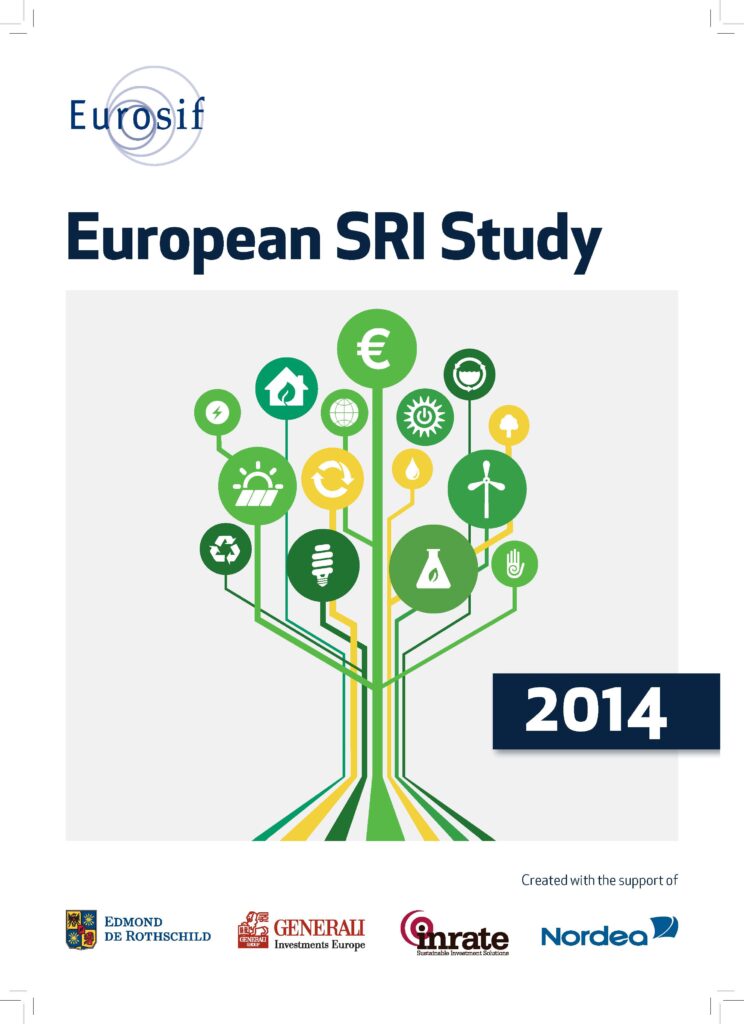Eurosif Report 2014
The 2014 European SRI Study confirms some industry trends already detected in the previous editions. Data was collected or estimated at the end of 2013 covering institutional and retail assets from 13 distinct European markets. The methodology is consistent with previous editions, adding details around some SRI strategies and drawing upon the taxonomy refreshed in 2012. Reported figures are best-effort estimates of the market combining self-reported data and Eurosif and national SIFs estimations where appropriate. The first finding of the Study is that all surveyed Sustainable and Responsible Investment strategies are continuing to grow, in aggregate, with no exception, and they do so at a faster rate than the broad European asset management market. Looking at the more conventional strategies, growth rates range from 22.6% (Sustainability themed) to 91% (Exclusions) between 2011 and 2013. Impact investing is the fastest growing strategy, registering 132% over the period.
Over the same period, the overall European asset management industry has grown by an estimated 22%. The Study also confirms that Exclusions has gone ‘mainstream’ as a strategy with, by far, more assets covered than any other strategy, and with the most consistent usage across Europe. Exclusions cover about 41% (€7 trillion) of European total professionally managed assets. Even when considering Exclusions not related to Cluster Munition and Anti-Personnel Landmines (CM & APL), the strategy covers about 23% (€4 trillion) of the overall European investment market. Voluntary Exclusions related to CM & APL reach about 30% (€5 trillion) of the European investment market.
[...]

